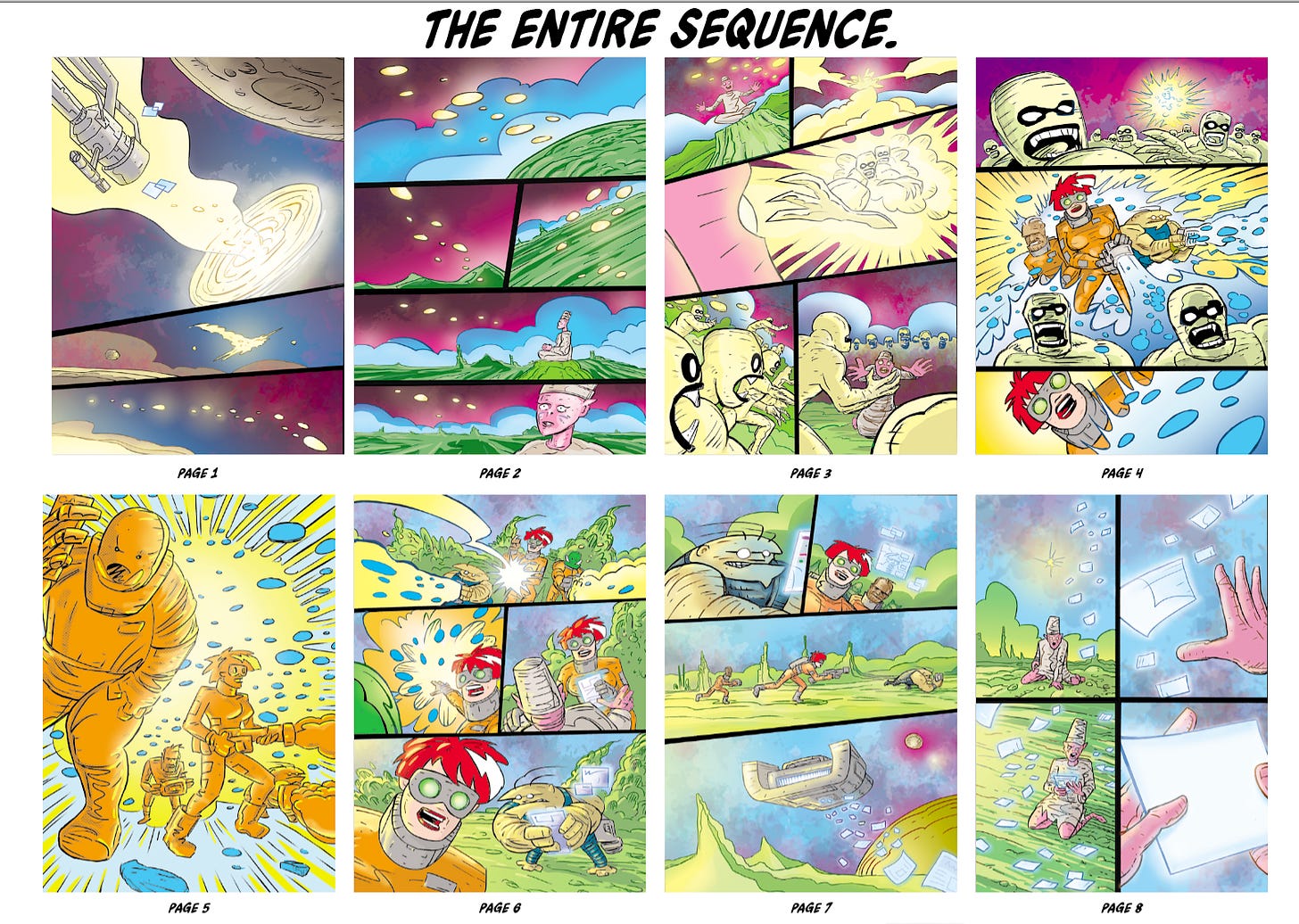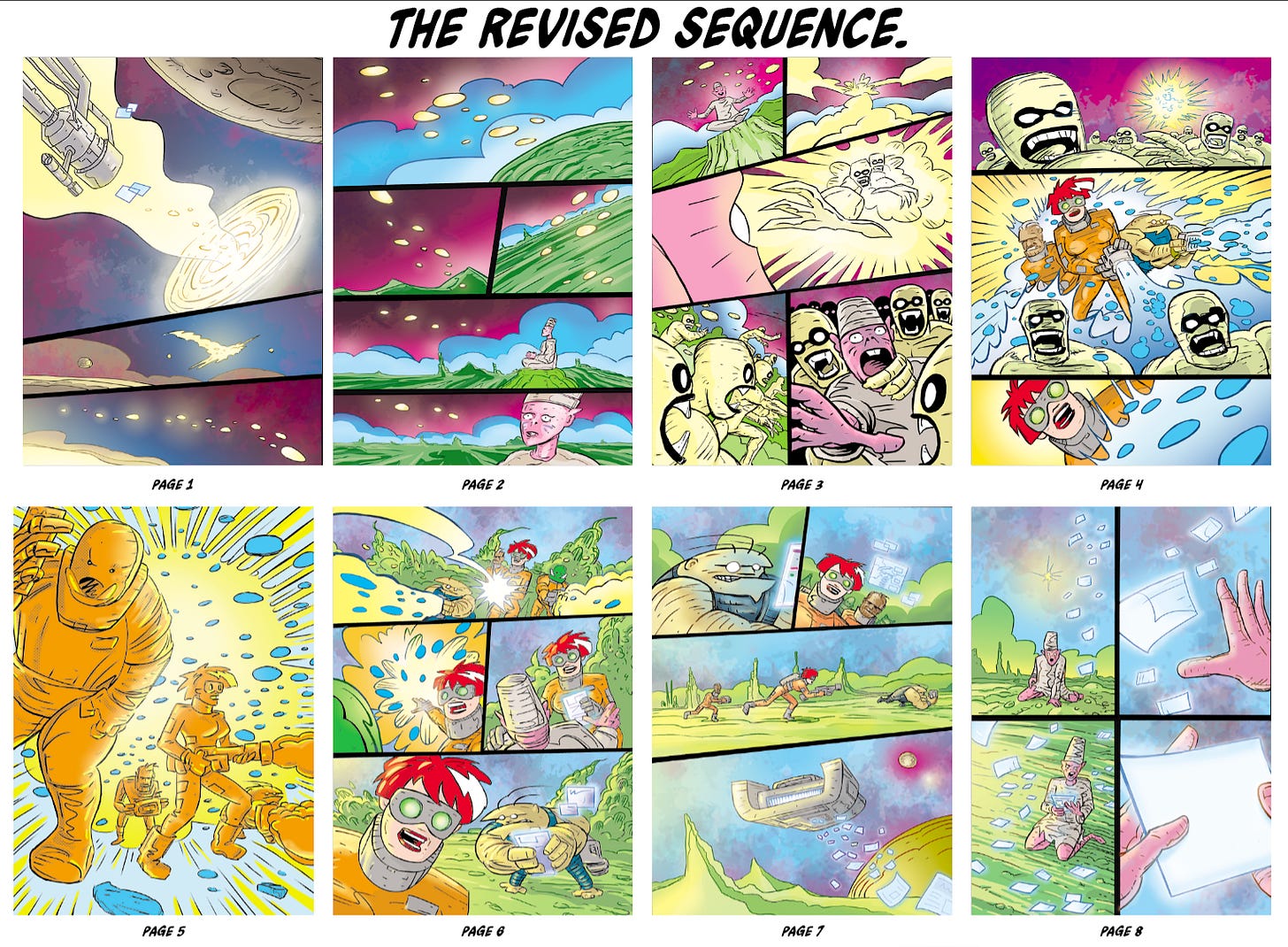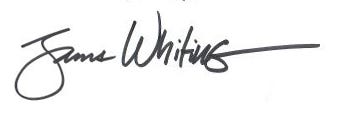as you may have noticed, I have renamed my Substack blogs and newsletters to "Creating Comics" as it more accurately describes my passion - creating comics. In these posts and emails, I will guide you through every step of my comic-making process, from plotting to drawing, inking, coloring, lettering, and marketing. I will also share insights into the tools I use and why I prefer them.
Let's review the pages of my new 8-page Margo Intergalactic Trash Collector story in sequence and assess their effectiveness.
The story…
A colossal gap in the cosmos is emitting spores that traverse the universe in search of planets to create gateways for an invasive army (page 1). One of these spores lands on a nearby planet, home to a solitary monk (page 2). Believing the spore to be a divine message, the monk unwittingly attracts the attention of the Invaders, who swiftly surround him (page 3). Margo and crew appear repelling the invasion but detect a new portal opening (pages 4-6). They depart, leaving behind a notice (page 7). The priest receives a bill demanding payment for the services provided (page 8).
What does NOT work…

By redrawing the panel, the story flows better, heightening the drama of the priest being attacked.
Let’s take another look at all the pages with the new panel.
Letting go...
As an artist, it can be a challenge to remain objective when assessing my own work. After investing hours of effort, it's difficult to detach and determine whether the piece fits seamlessly into the larger narrative. Sometimes, it's necessary to let go of a cherished creation that doesn't serve the story. This is where an editor can be invaluable. Initially, I struggled to receive criticism from my editor and felt angry, and ready to fight tooth and nail to keep my beloved art in the story. However, upon reflection and taking a break from my own process, I realized that the editor was correct in identifying areas that didn't support the story. By striving to view my work impartially and considering the story as a whole, I'm better equipped to recognize any shortcomings before submitting it to my editor. This approach saves me time, money, and frustration. More importantly, it makes the story better.
Next, we will begin the lettering inserting the story into these pages.
Keep creating,
The tools I currently use to create comics…
Paper and pencil, to create breakdowns, sketches, and storyboards. Since I write and draw my own comics, this process works best for me.
Clip Studio Paint for importing my sketches and inking.
Photoshop for coloring, because I am really comfortable with the ins and outs of the program.
Illustrator for lettering, while other programs will do the job, Illustrator really has the muscle to do the hard and specialized work I need.
Indesign for laying out my book with trade dress and creating PDFs to send other artists, editors, printers and digital comics.
Acrobat Pro for modifying PDFs, creating a PDF workflow, and for a printer’s custom needs.







